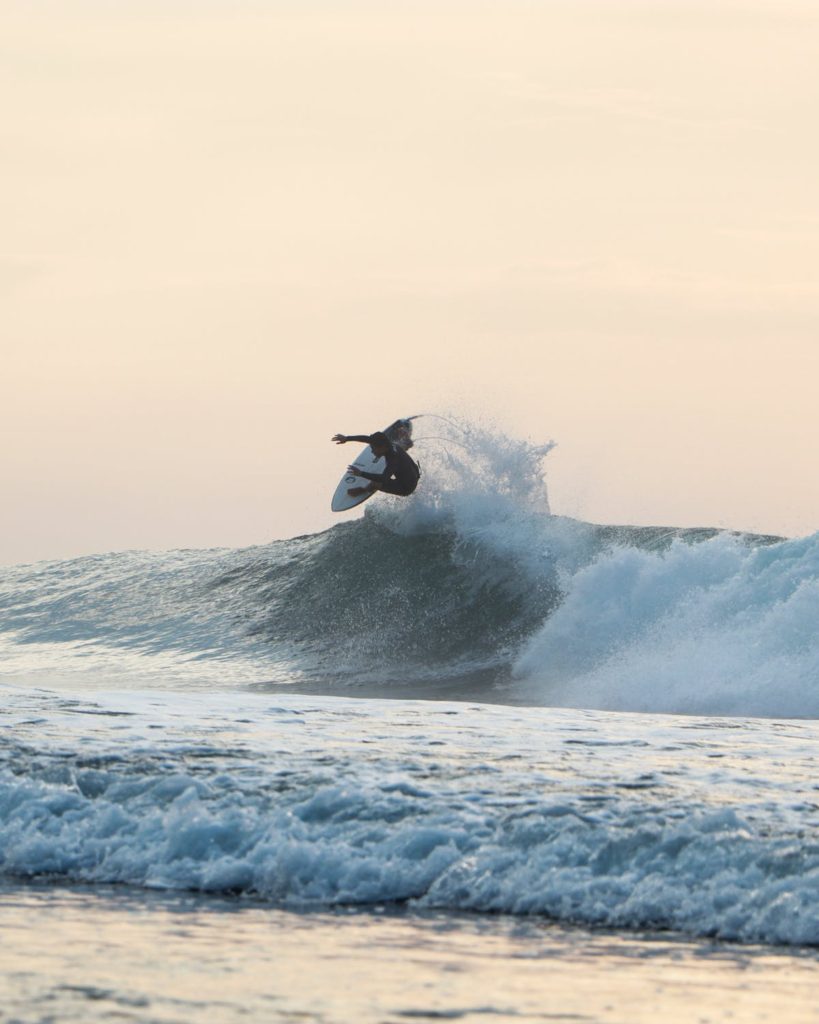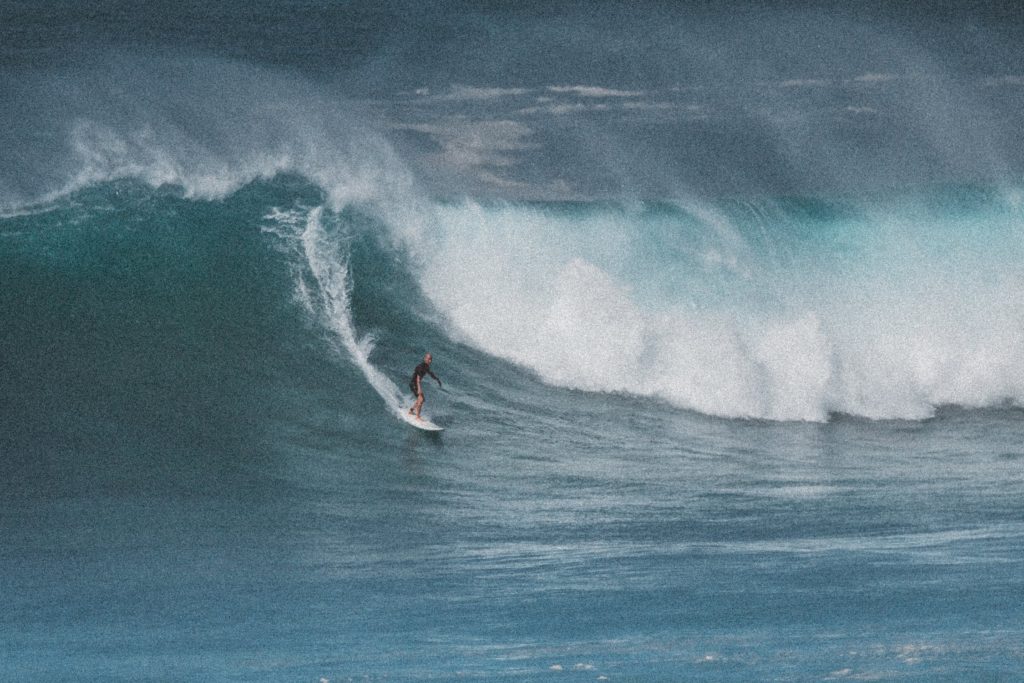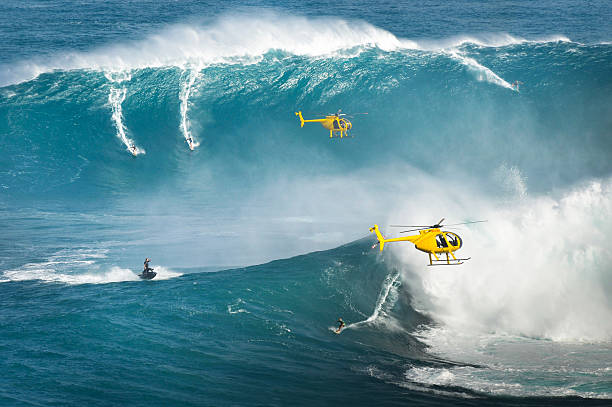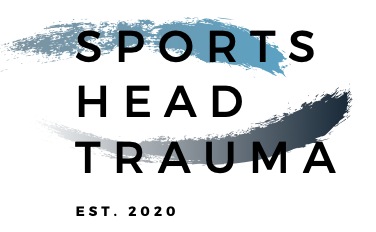For now, the primary solution to effectively minimize head injury comes through education, advocation, and the use of effective & protective head gear and helmets.

Similar to football players, who experience repetitive hits to the head in almost every play, surfers are also prone to repetitive head injuries. This awareness is just coming to light as more professional surfers speak up about their experience with mTBI and TBI. A recent study discovered that head trauma in recreational surfing was much more common than previously believed comprising about 24 % of all surfing injuries. To date, there have been no surfing specific TBI related studies ever conducted, therefore the evidence of concussions in surfing is still relatively unexplored.
According to the Surfer’s Medical Association, the surf board coming in contact with the head was the primary cause of TBI in surfing. A close second was hitting a rock or reef under the water. Though surfing isn’t what many would call a contact sport, the danger of being thrashed around by a wave, getting hit in the head with your own surfboard, or falling off the lip of a wave into a wall of water, rocks, or a dry reef can cause severe injuries including TBI. Concussions can also increase a surfer’s risk of drowning significantly. Head injuries in the water can lead to dizziness, confusion, blurry vision, or even unconsciousness. Even with this risk, the number of surfers wearing head gear and helmets is almost non-existent.
Pepperdine University’s Surf Team has been proactively working with HitCheck: Cognitive Assessment Aid, an app that takes every athlete’s baseline before surfing and monitors possible mTBI while surfing. Read Here
What can I do if I think I have a concussion in the water?
It is very common for athletes to continue playing even when they are injured, especially when dealing with head injuries because they are “invisible.” As a surfer, it is understandably more difficult to stop, because it would require paddling back to shore and talking to your coach, which requires more effort. Being able to identify the symptoms of a concussion is important. Knowing when to come back in can play an important role in your healing process and timeline. Repetitive hits to the head from waves after sustaining a concussion can exacerbate your head injury.
What is big wave surfing?
Big Wave surfing is for experienced surfers who either paddle out or are towed into waves that are usually over 20 feet (6.2 m) high. Imagine how amazing you have to be to surf on a wall of water over 8 stories high!

Some of the most well known big wave surf spots include:
Pe’ahi (Jaws,) North Shore of Maui
During certain times of the year, the waves are over 60 ft high. Due to the way the waves are formed, they travel about 30 miles per hour and thus make it nearly impossible for surfers to paddle into them. They have to be towed in by a jet-ski to be able to reach a speed fast enough to catch and ride the waves.

https://www.gettyimages.com/search/photographer?family=creative&photographer=Kjell+Linder
The Nazaré Canyon is one of the largest underwater canyons in the world. This large submarine valley goes to a depth of 5000 meters. The differences in depth in the canyon increases the height of the waves. When you add the right wind speed and direction into the equation, Nazaré has one of the most iconic and powerful surf breaks in the world.
Mavericks is a big wave that breaks off Pillar Point, near Half Moon Bay. The swells are usually created by winds from storms off the coast, sometimes even hundreds of miles away. After a storm, the waves travel toward the shore, where they are met by shallower water over the reefs. The monstrous energy from the waves converge and lift up the surf, creating powerful, and lighting fast waves. Professional surfer Mark Foo drowned while surfing Mavericks in 1994.
Teahupoo, Southwest tip of Tahiti
This jaw dropping left handed barrel is arguably the most dangerous big wave surf spot in the world, with a lip that is often times as thick as the wave. The waves breaks over a dry reef, only meters below the surface, but right outside the reef the depth drops to over 300 feet. This very sharp contrast creates some of the cleanest, but combination of the largest, fastest, and heaviest waves ever seen.
Waimea Bay, North Shore of Oahu (South of Banzai Pipeline)
Well known for the 30 ft waves produced during the winter months. Waimea and Pipeline host a variety of surfing competitions. Pipeline is a surf reef break known for forming hollow heavy barrels that curl. It has one of the most recognizable waves in the world, with a challenging left, where even experienced surfers are sent over the massive falls if their takeoff isn’t fast enough.
***Big Name surfers like Mercedes Maidana, Shawn Dollar, Albee Layer, Derek Dunfee, and Jamie Mitchell (to name a few), have spoken about their TBI publicly and how it has affected their career and life outside of surfing. Click on each name to learn about their TBI experience (Coming soon)
Disclaimer: The information provided by Sports Head Trauma is solely for educational purposes and raising awareness of mTBI & TBI. Sports Head Trauma does not provide medical advice, and the information from this website should not be used to diagnose, manage, or treat a head injury. If you have sustained a head injury or think you have a concussion, seek medical help immediately. If you need medical advice, diagnosis, or treatment information, please talk to a healthcare professional or a physician. This website is not meant to create a physician-patient relationship, or any type of confidential relationship. The information provided by Sports Head Trauma should not be substituted for medical advice, diagnosis, or treatment information from a healthcare provider, as the sole purpose of the website is for informational purposes. In the event of an emergency, always speak to a medical professional or call 911.
